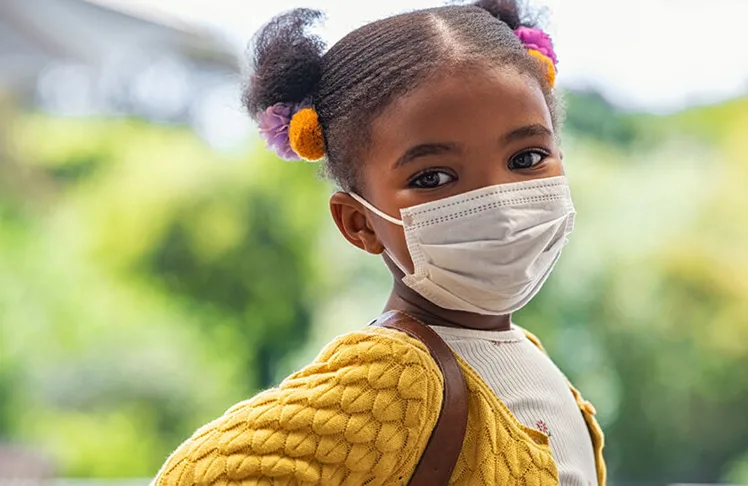
There are disparities in children’s health directly resulting from poverty and racism. Children from low-income communities and communities of color often face higher levels of contaminants, pollution, and illnesses like ADHD and asthma.
“Definitely the living environments can play a big part in healthcare,” says Hempstead. “The racism structure of how environments affect Black communities are strategic. With redlining areas, places that are not adequate to live in, people still have to live there. When you go to the doctors those type of symptoms or underlying medical issues that could be resolved are not addressed basically based on the color of a person skin.”
When people advocate for health equity, the goal is to ensure that all people have the access and means to live a healthy life. But the often-unspoken truth underlying this challenge is that being a person of color in America – whatever your economic status is “bad for your health”.
“Going back to health and environment, here in the United States this country’s founding was under the auspices of racism,” says Hempstead. “When you have these systems that are in place and in play, you [as a Black person or person of color] are attacked from birth and as Black families try to change things, they have suffered great barriers because of racism.”
Race in the United States has historically been a social category indicating differential access to resources and power. This unequal treatment extends to major societal institutions, with healthcare being a prime example. Disparities in diagnosis and treatment between Blacks and Whites are influenced by the medical community’s perceptions.
According to the National Institution of Health (NIH), pain assessment in Black patients examines beliefs associated with racial bias in pain management, a critical health care domain with well-documented racial disparities. Specifically, studies reveals that a substantial number of medical students and residents hold false beliefs about biological differences between blacks and whites and demonstrates that these beliefs predict racial bias in pain perception and treatment recommendation accuracy.
“It has been proven that doctors were educated to believe that black people’s skin is thicker and so therefore have a very high pain tolerance and are very hesitant to prescribe pain medicines to Black people,” says Hempstead. “Their (white doctors) backgrounds are based off what they were taught in schools. Less than ten years ago, medical students were still being taught that you don’t need to give Black people pain medicines because their pain levels are high.”
“When you have medical institutions that are training centers and they are training their up and coming, all-star doctors this rhetoric about Black children and they have preconceived notions on top of the way they were raised about looking at black people, you have these two things coming out of schools. Black people just within the 20th century became human by the constitution,” added Hempstead.
This bias extends to ADHD diagnosis in children. A 2013 study found that Black children were 69% less likely to be diagnosed based on their symptoms, while Latino children were 45% less likely to receive appropriate attention and treatment. This discrepancy is not just a medical issue but a reflection of deeper societal prejudices.
The fight against these disparities requires a comprehensive approach. Experts believe that improving the situation is within reach. Health builds from where we live, learn, work, and play, and only secondarily in the doctor’s office. Data conclusively shows that early childhood education, the nutritional value of the food in our children’s diets, and access to safe outdoor spaces are crucial. Working on these and other social and economic fronts in underserved communities is essential.
Acknowledging that discrimination can be both conscious (intentional) and unconscious (unintentional) on the part of educational and health care providers is important, but its effects are equally harmful. Without appropriate diagnosis, many black and Latino children miss out on badly needed opportunities to succeed.
The Lancet, Child and Adolescent Health, in a study, reveals “Overall, the literature reveals widespread patterns of inequitable treatment across pediatric specialties, including neonatology, primary care, emergency medicine, inpatient and critical care, surgery, developmental disabilities, mental health care, endocrinology, and palliative care. The identified studies indicate that children from minoritized racial and ethnic groups received poorer health-care services relative to non-Hispanic White children.”
To bridge the health equity gap, it is crucial to recognize the link between racism and poor health and actively work towards addressing it. As Martin Luther King Jr. poignantly put it, “Of all the forms of inequality, injustice in health is the most shocking and inhumane.” This call to action emphasizes the urgent need to combat health disparities as a fundamental aspect of fighting for racial equality and justice.

